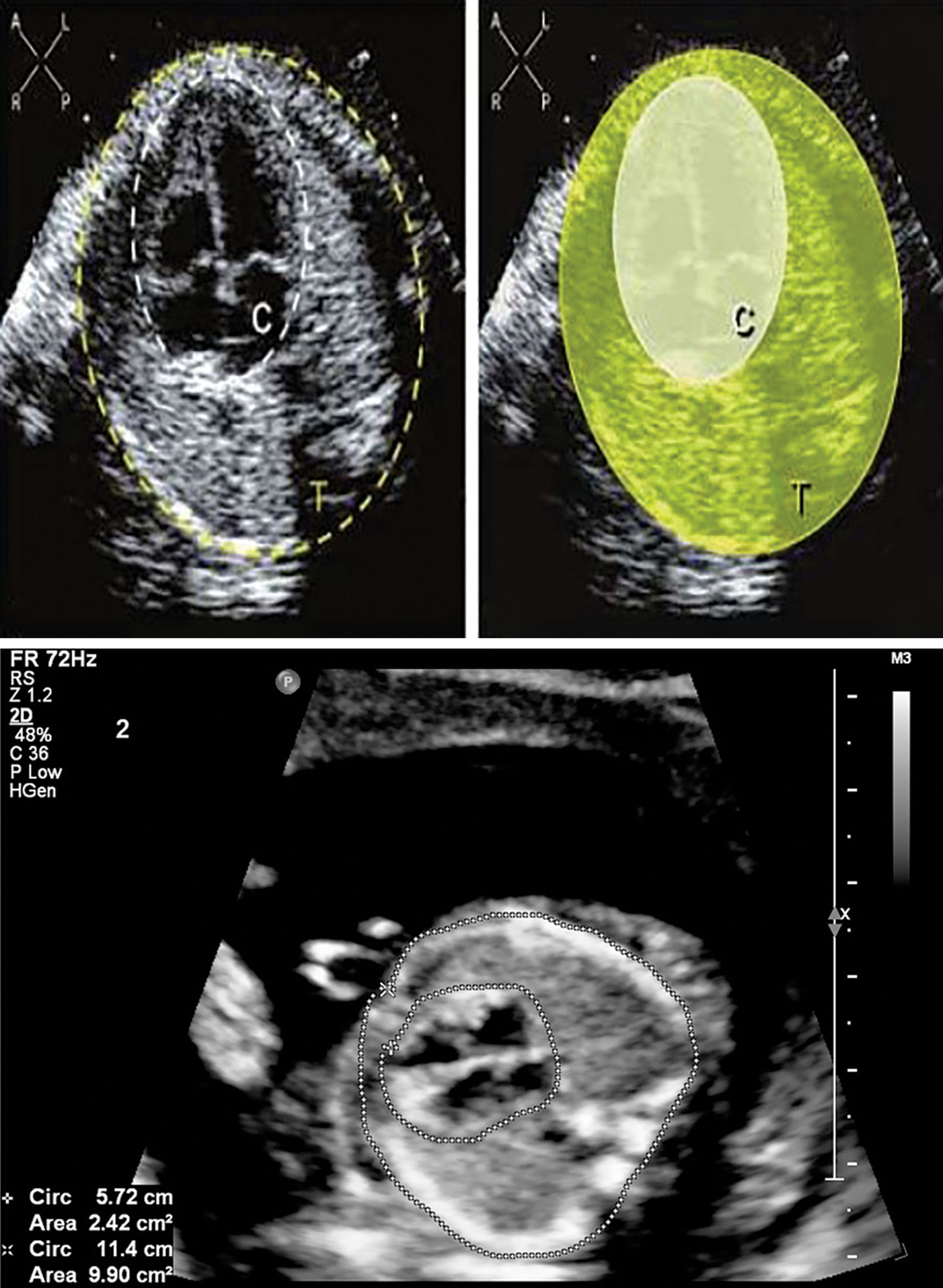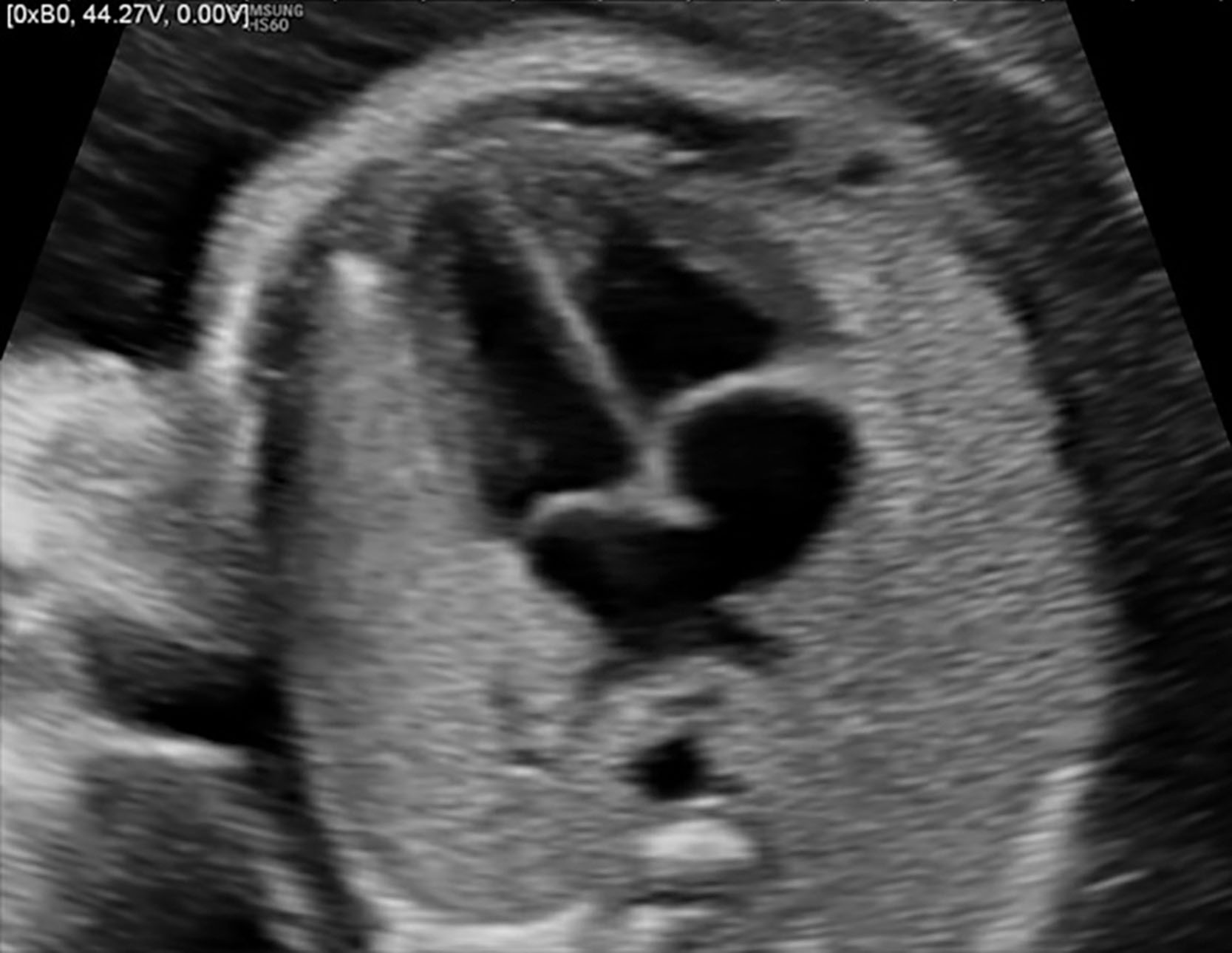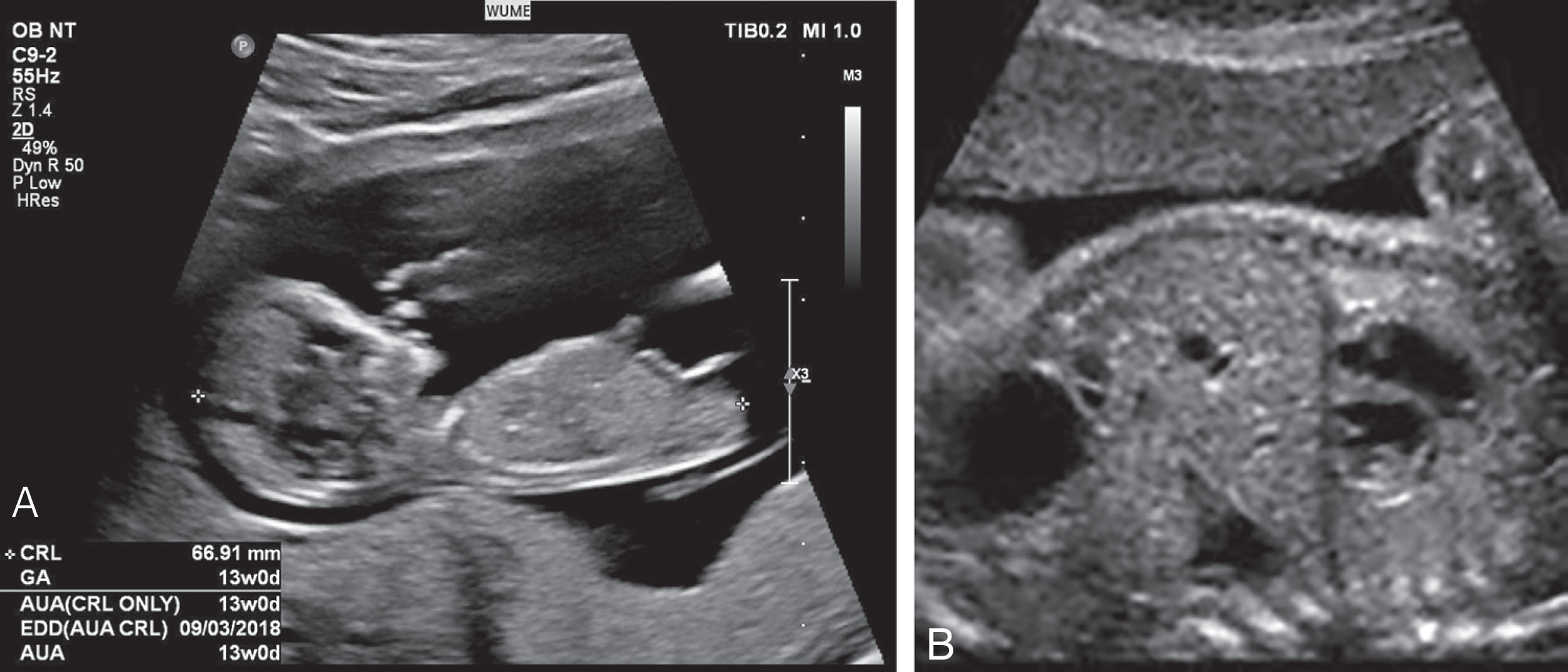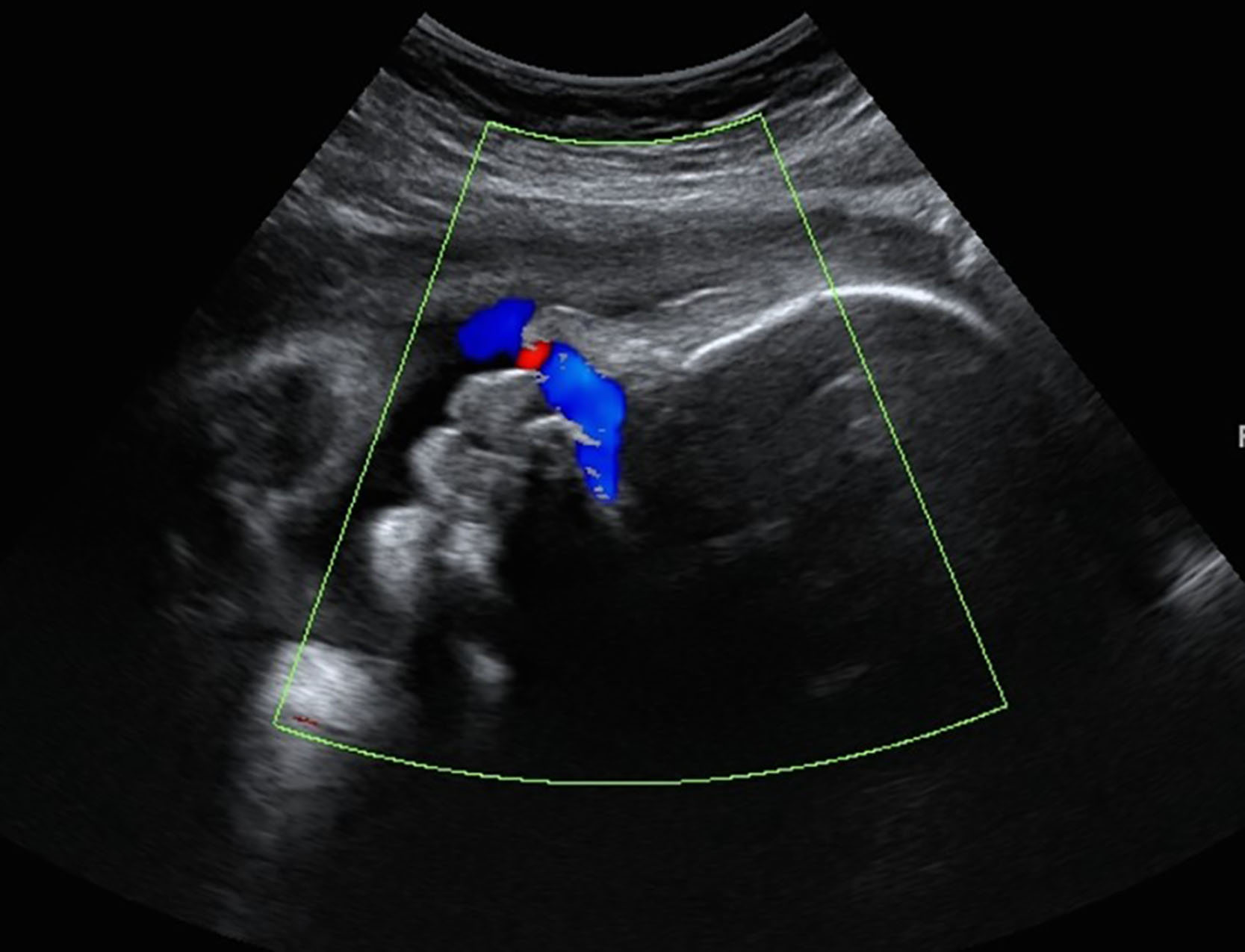Physical Address
304 North Cardinal St.
Dorchester Center, MA 02124
On completion of this chapter, you should be able to:
Describe the development of the thoracic cavity
List the normal sonographic features of the thorax and diaphragm
Describe the development and consequences of pulmonary hypoplasia
Differentiate between solid and cystic lesions of the lung
Discuss the sonographic findings in a diaphragmatic hernia
The detection of thoracic defects is important because such lesions may compromise fetal breathing and require surgery in the immediate neonatal period. Lung and diaphragm disorders are discussed in this section. Heart abnormalities may also cause devastating secondary compression effects (pulmonary hypoplasia) and are discussed in Chapter 35, Chapter 36 .
One of the important determinants of whether the fetus can survive as a neonate in the air-filled, ex utero environment is the adequacy of biochemical and structural development and maturity of the lungs. Adequacy of pulmonary development is probably the single most important determinant of fetal viability, and pulmonary immaturity is the major reason why fetuses younger than 24 weeks of gestation are generally considered nonviable.
In early development, mesenchymal buds from the early trachea form and penetrate the masses destined to become the lungs. The bronchi, bronchioles, alveolar ducts, and alveoli are developed through multiple divisions and budding. Between 16 and 20 weeks, the normal number of bronchi has formed. Between 16 and 24 weeks, a dramatic increase in the number and complexity of air spaces and vascular structures has occurred. After 24 weeks, another important developmental phenomenon occurs: progressive flattening of the epithelial cells lining the air spaces, which allows closer apposition of capillaries to the fluid-filled air space lumen and results in further development of the air-blood barrier necessary for efficient gas exchange after birth.
Breathing movements that occur before birth result in the aspiration of fluid into the lungs. The lungs at birth are about half filled with fluid derived from the amniotic cavity, tracheal glands, and lungs. The fluid present in the lungs at birth clears by three routes: (1) through the mouth and nose, (2) into the pulmonary capillaries, and (3) into the lymphatics and the pulmonary vessels.
The fetal thorax is examined by the sonographer in both the transverse and coronal or parasagittal planes. The normal thoracic cavity is symmetrically bell shaped, with the ribs forming the lateral margins, the clavicles forming the upper margins, and the diaphragm forming the lower margins. The lungs serve as the lateral borders for the heart and lie superior to the diaphragm. The diaphragm may be observed on sonography as an echogenic smooth hypoechoic muscular margin between the fetal liver or spleen and the lungs ( Box 61.1 ).
Transverse, coronal, and/or parasagittal
Evaluate chest: size, shape, symmetry
Evaluate heart: position, size, rate, pericardial fluid
Evaluate pulmonary texture
Centrally positioned mediastinum
The thorax is normally slightly smaller than the abdominal cavity ( Fig. 61.1 ). The ratio (thoracic circumference to abdominal circumference) has been reported to remain constant throughout pregnancy (0.94 ± 0.05). Extreme variations in thoracic size should signal the sonographer to look for other anomalies. In the presence of oligohydramnios, resultant pulmonary hypoplasia may be seen with a reduction in overall thoracic size. Chest circumference measurements are made in the transverse plane at the level of the four-chamber view of the heart (see Fig. 61.1C ).

A fetus with a significant narrow diameter of the chest may have asphyxiating thoracic dystrophy . Several syndromes may be associated with this finding, including thanatophoric dwarfism. The best ultrasonic determination for predicting pulmonary hypoplasia is the chest area (CA) minus the heart area (HA) times 100 divided by the CA:
The cardiothoracic ratio is fairly constant throughout gestation, with a mean value of 0.45 at 17 weeks and 0.50 at term ( Fig. 61.2 ). Cardiomegaly is present when the cardiothoracic ratio is greater than two standard deviations. The C/A ratio may also be present in cases of reduced chest volume rather than an enlarged heart; thus it is important to compare the measure of the chest circumference to gestational age nomogram.

The central portion of the thorax is occupied by the mediastinum, with most of the heart positioned in the midline and left chest. The apex of the heart should be directed toward the spleen; the base of the heart lies horizontal to the diaphragm ( Fig. 61.3 ). The location of the heart is important to document in a routine sonographic examination because detection of abnormal position may indicate the presence of a chest mass, pleural effusion, or cardiac malformation.

The fetal lungs appear homogeneous on sonography with moderate echogenicity. Early in gestation, the lungs are similar to or slightly less echogenic than the liver ( Fig. 61.4 ), and, as gestation progresses, a trend toward increased pulmonary echogenicity relative to the liver is observed. Overlying ribs and acoustic enhancement produced by blood in the heart are two important problems that may complicate the exact determination of echogenicity of the lungs. Color Doppler may be used to outline the vascular pattern within the lungs. Ultrasound cannot be used to assess lung maturity.

Fetal breathing becomes more prominent in the second and third trimesters. The mature fetus spends almost one-third of its time breathing. Fetal breathing movements are documented if characteristic seesaw movements of the fetal chest or abdomen are sustained for at least 20 seconds. Fetal breathing movements are considered absent if no such fetal activity is noted during the 20-minute observation period.
Color flow Doppler may be used to detect fetal breathing through the nostrils. The fetal facial profile should be obtained with the nose clearly demonstrated; as color is turned on, flow disturbance movement may be seen to flow from the nostrils ( Fig. 61.5 ).

The biophysical profile used by many obstetricians to assess fetal well-being uses the respiration pattern as a factor in its scoring. Fetal respiration may vary in response to maternal activities and substance ingestion; it is stimulated by increased sugar doses and is decreased by smoking.
Become a Clinical Tree membership for Full access and enjoy Unlimited articles
If you are a member. Log in here